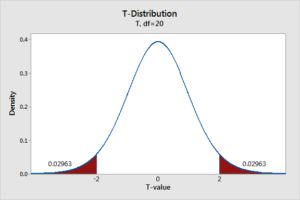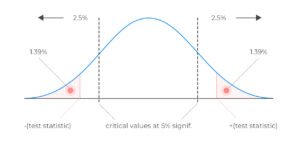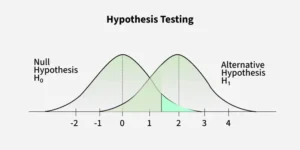Hypothesis Testing: t-test & p-value
In analytics, we often ask: “Is this change real or just random?”
Hypothesis Testing is the formal method to answer this, and tools like the t-test and p-value help us decide.
What is Hypothesis Testing?
Hypothesis testing is a statistical method to make decisions using data. It starts with two statements:
- Null Hypothesis (H₀): No difference, no effect, or status quo
- Alternative Hypothesis (H₁ or Hₐ): There is a difference, or some effect exists
We collect sample data and use statistical tests to determine whether to reject the null hypothesis.
What is a t-test?
A t-test checks if the means of two groups are significantly different.

Types of t-tests:
- One-sample t-test: Compare sample mean to a known population mean
- Two-sample t-test (independent t-test): Compare means of two independent groups
- Paired t-test: Compare means from the same group at two different times
Example:
Suppose NextLeap launches a new course and wants to test if students spend more time on the new course than the previous one.
- H₀: There is no difference in average time spent
- H₁: There is a difference
A two-sample t-test can help test this.
What is a p-value?
The p-value tells us how likely our sample data would occur if the null hypothesis were true.

- Low p-value (≤ 0.05): Strong evidence against the null → Reject H₀
- High p-value (> 0.05): Weak evidence against the null → Fail to reject H₀
Example:
You test whether users spend more time on the updated Adidas product page.
You run a t-test and get p = 0.03 → This means there’s only a 3% chance of observing this result if there was no difference. So you reject H₀.
Steps in Hypothesis Testing:
- Define H₀ and H₁
- Choose a significance level (α), often 0.05
- Collect and summarize data
- Run a t-test and get the test statistic + p-value
- Compare p-value with α
- If p ≤ α → Reject H₀
- If p > α → Fail to reject H₀
Real-World Applications:
- A/B testing in marketing or UI design
- Customer behavior analysis (e.g., app feature usage)
- Product experiments (e.g., comparing delivery speeds of two logistics methods)
